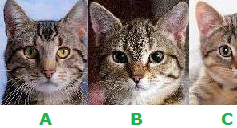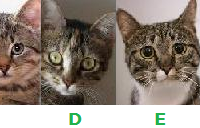The Kuriki method (the first edition in 2007) is a theory about Tourette’s syndrome (tic disorder) and obsessive-compulsive disorder to cure these diseases without medication. This theory is based on the author’s inference and interpretation regarding the structure of these diseases. Since it has been written for the psychoanalysts, reading will be difficult for people in general and it might be sometimes read erroneously. Therefore the Kuriki method must presuppose that the patient is treated by a nearby psychoanalyst, and that, between the patient and the Kuriki method, there is always the psychoanalyst. The explosion of emotional catharsis, which has strong repercussions, is done only for three seconds, once a week: beyond this rhythm, it would be an accident caused by negligence, and the psychoanalyst who is inexperienced in emotional catharsis must take responsibility for the temporary mental collapse caused by the accident. Also, to the patient who has weak capacity of logical reasoning, the psychoanalyst must explain well on the violent emotion of revenge caused by the illusory confusion between the person of the traumatic image in his head and the person in the real world.
Cure for Tourette’s syndrome (tic disorder) and OCD without medication
§14


Choose a cat among these five cats, and explain why you choose that one.
Rationalization in tic disorder (in Tourette’s syndrome)
Understanding of rationalization in the method Kuriki is very important, because, in a narrow sense, it is the understanding of the no-relationship between the manner of a tic movement and the content of a psychological trauma, and in a broad sense, it is the understanding of tic disorder and obsessive compulsive disorder as mechanisms of bodily repression.
Some examples of false motives.
People who have obsessive compulsive disorder of washing hands think;
“Because there can be germs on my hands.”
People who have a neck cracking tic think;
“Because it makes a cracking sound, it means this joint is not in the right position.” (Actually, it’s the sound of gas).
People who have coprolalia think;
“I have no bad intention.”
There is a resemblance to “these grapes are not ripe” of the fox.
Also, false motives in a hypothetical phrase. “If these grapes were ripe, I would take some of them.”
“If there were no germs, I would not wash my hands.”
“If this joint made no sound, I would not do this movement.”
“If I had a bad intention, I would not pronounce this word.”
Fraudsters not only hide the details of their fraud, but they also hide the fact that they are fraudsters. In the Conscious, rationalization is a refutation against the absurdity of the real motive (the compulsive physical sensation) of a very conscious act, and rationalization hides the function of rationalization itself.
The Conscious is bothered by the irrationality of the rationalization, and this bother dominates the foreground of the Conscious, repressing libidinal physical sensations. Neurosis is a disease of “having a neurosis”, and each one of the obsessions has no pathological significance. Categorization of symptoms is not necessary; categories are results of rationalization.
A physical symptom of neurosis is always accompanied by a false motive. It is because a symptom is chosen from among several symptoms that can have a false motive. The Unconscious does not invent an excuse for an act that has been done, but the Unconscious chooses an act from among several acts that have a false motive, and the Unconscious makes the Conscious do this act. Rationalization is not a function of finding an excuse or a justification for an inexplicable act, but a function of selecting at randum an act that has already a childish false motive. False motives pass childish rationality and they are irrational to the Conscious, but their persistent irrationality becomes the object of the Conscious and becomes a means of repressing libidinal physical sensations.
For example, a false motive like “there is no nail clippers” is not invented after the act of nail biting, but it is because this false motive is possible that the act is chosen.
The act can a trichotillomania with: “as there are a lot of hair, I can pull out one.”
The selecting is arbitrary. Thus, rationalization is a function of arbitrary selecting, always with a false motive.
For a tic disorder, a movement is arbitrarily chosen and this movement is always accompanied by a false motive. There is no importance in choice of movement and choice of motive. It can be, for example, a tic of the shoulder or a tic of the arm, with whatever motive. An arbitrary tic appears in the Conscious with an arbitrary motive, and something will be hidden. There is no importance in an arbitrary choice among the five cats with an arbitrary motive. Any symptom will function as neurosis. Rationalization is a function of arbitrary choice in the Unconscious. It is better to avoid the classification of tic movements and the classification of obsessions of obsessive-compulsive disorder.
Corporality
Among the writings on psychoanalysis by various «psychologists», often there are descriptions that are missing enormously recognition of the corporality of neurosis. In treatments of neurosis, the recognition of the corporality is essential, such as ; neurotic symptoms are bodily, the Id of Freudian psychoanalysis is bodily, and therefore the large part of the Ego is bodily in the Unconscious, etc. The bodily act of the fox of going away represents the Absolute Compulsion between the bodily sensation of tic disorder in a voluntary muscle and a bodily movement, and the Absolute Compulsion between the bodily sensation of obsessive-compulsive disorder (skin sensation, for example) and a bodily act. While healthy repression is essential for mental balance, the KV is the mechanism of bodily repression in neurosis. We can also say that the psychoanalytic Unconscious is there inside the body.
The content of a traumatic image is always bodily, sexual and genital. (For example, repression of the disagreeable bodily sensation of a daily cutaneous touching, etc.) However, the body part of the neurotic symptom has no relation to the content of the trauma.
Libido
Ideally, the healthy autonomy of the Libido should be established after mental development. Neurosis is a state of fixation or regression caused by an obstacle to the healthy development of the Libido. Although it is ideal for sexual desire to be genital, other parts of the body become the object of the Conscious due to the pathological suppression of genital bodily sensations. The “obsessive intramuscular sensation” appears in the Conscious.
